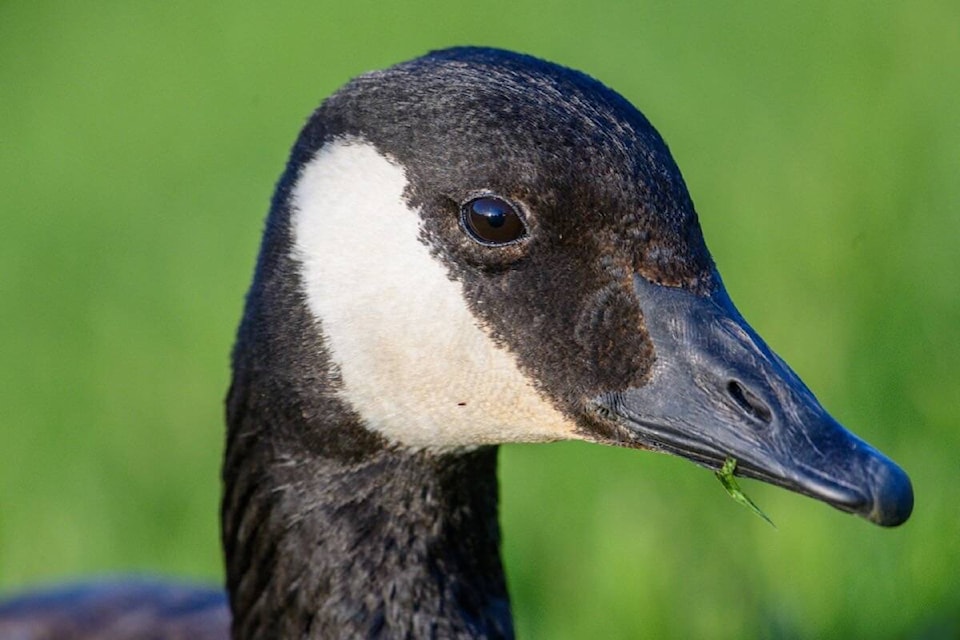A plan to thwart the ecological impacts of Canada geese in the Campbell River Estuary has been funded by city council.
On Jan. 24, Campbell River city council approved a four-year, $5,000 per-year budget (from the city’s gaming reserve) for the Guardians of Mid Island Estuaries Society (GoMIES) to work with the Wei Wai Kum Guardians to protect the estuary from geese. It will fund the construction of additional exclusion structures and the launch of an egg addling program, to control geese movement and numbers, respectively.
Canada geese were once only visitors to Vancouver Island, said Tim Clermont, executive director of GOMIES, an organization that works to conserve and restore the Island’s estuaries.
“In the ‘70s, ‘80s, and early ‘90s, basically there were no Canada geese nesting on Vancouver Island,” he said. “There were some migratory birds that would come in the fall and in the spring, but they were never residents.”
That changed when wildlife agencies started importing birds and eggs from the lower mainland of B.C. But these new geese never learned (or decided) to seasonally migrate — and instead, many now stay year-round.
“They started to nest in our estuaries, and their populations just took off,” said Clermont. “Now, they are a regionally over-abundant group that moves up and down the island, and they do a lot of damage to estuaries, farmlands, sports fields, and golf courses.”
In Campbell River, there is now not only a group that arrives to moult in the spring and summer (with numbers peaking in July), but also a smaller group that stays here year-round, he said. At their peak, over 1,400 geese have been recorded in recent years.
Geese are harmful to estuaries because they voraciously consume ‘Carex’ sedges, a type of wetland plant forming meadow-like habitats along shorelines. Geese eat these sedges by “grubbing,” meaning they pull the plant’s roots and rhizomes from the ground, which disturbs soil and causes erosion.
“A 10-pound goose can eat a pound of vegetation every day, and there’s been over a thousand geese in the estuary during the moult,” he said. “They eat a lot of vegetation, and they’ve been doing a lot of damage in areas that, 20 or 30 years ago, were restored as part of compensation for the log-booming days.”
READ ALSO: A river-inspired Campbellton connection
Sedge meadows protect shorelines from waves, provide nesting habitat to waterfowl and shorebirds, and offer cover and food for out-migrating juvenile salmon.
“When you lose all that vegetation, and you lose the marsh platform, there is a huge loss of salmon habitat,” he said.
The organization has been working with the Wei Wai Kum Guardians to install fence-like structures to dissuade geese from entering these habitats. Constructed of locally-harvested willow and alder branches, they work because geese refrain from entering areas into which they cannot see, said Clermont.
The other part of the plan are nest searches followed by egg addling, a practice in which eggs are removed from a nest, shaken, then returned. This stops the eggs from hatching without driving adults to start new nests.
“It’s a technique, approved by the SPCA (B.C. Society for the Prevention of Cruelty to Animals), to keep populations of resident geese from exploding,” he said.
The Quinsam Coal mine site, where about 20 geese nests produce over a hundred young per year, is a priority area for addling.
Support for the program was unanimous among city council. Mayor Andy Adams said We Wai Kum “has done a tremendous job in the past and will continue to do so.”
“This is a really good project — it brings First Nations together with other nonprofits and the Greenways Land Trust and does wonders for maintaining the sedges and the habitat in the estuary,” said Coun. Charlie Cornfield. “It gets over-grazed by moulting Canada geese every year.”
RELATED: Campbell River creek gets TLC from local ecology champions
Passing the baton of environmental stewardship to seven generations on a Vancouver Island estuary
sean.feagan@campbellrivermirror.com
Like us on Facebook and follow us on Twitter
